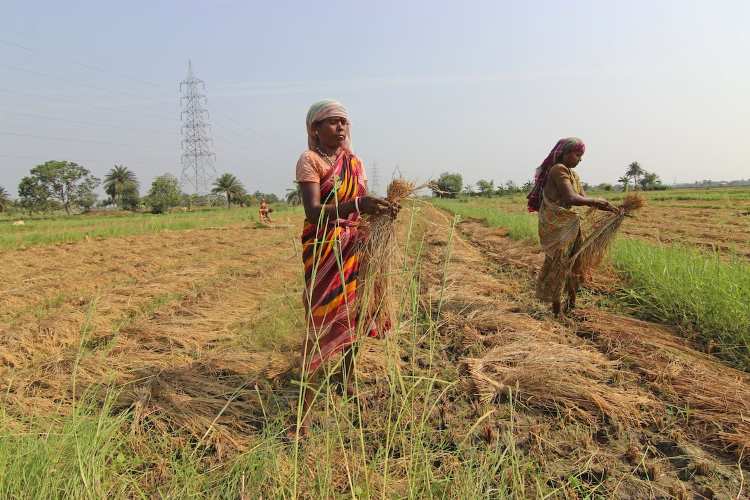
India’s economic growth: The Reserve Bank of India’s latest State of the Economy report emphasises the necessity of reducing inflation to the 4% target, which is crucial as India seeks to maintain its robust growth momentum into the next financial year. The report, which was released last week, also underscores the need for at least a 7% GDP growth in FY25. Challenges such as the sluggish recovery in the rural economy and moderated growth in private consumption highlight the urgency of controlling inflation to achieve inclusive growth.
While controlling inflation is crucial for India’s overall growth, neglecting the challenges faced by the rural economy could hinder our progress towards inclusive prosperity. The sluggish recovery in rural areas, characterised by stagnant agricultural incomes and limited job opportunities, demands immediate attention. To bridge this gap, increased investment in agricultural infrastructure, from irrigation systems to cold storage facilities, is essential. Additionally, expanding access to credit for farmers through dedicated schemes and simplifying land ownership processes can boost entrepreneurship and rural livelihoods. By prioritising these measures, we can ensure that the fruits of economic growth reach every corner of our nation.
READ | From urea glut to cash in hand: Can fertiliser subsidy go direct?
The RBI’s December 2023 policy projection anticipates inflation, measured by the Consumer Price Index, to be around 4% in the second quarter of FY25. This follows the National Statistical Office’s forecast that the Indian economy will grow by 7.3% in 2023-2024, exceeding expectations. The RBI attributes this strong performance to a shift from consumption to investment, bolstered by the government’s focus on capital expenditure, which is attracting private investment. While optimistic, the RBI cautions against over-reliance on government spending and urges the private sector to lead future growth, with public spending and foreign direct investment playing supporting roles.
The RBI’s research team, led by Deputy Governor Michael Debabrata Patra, advocates for stronger bank balance sheets, improved asset quality, and sustained fiscal and external consolidation. They also emphasise leveraging technology for inclusive growth in a risk-free environment. Although the economy’s potential output is increasing, the actual output slightly surpasses it, indicating no immediate risk of overheating. It is important to note that these findings do not necessarily reflect the central bank’s official stance.
The real estate sector in India is experiencing significant growth, with the highest sales in over a decade. This resilience and adaptability in the sector are leading to a trend of renters becoming homeowners. The high rate of real fixed investment in 2023-24 bodes well for the economy’s productive capacity.
In 2023, a key challenge was stagnant global trade growth. However, a recovery is expected in 2024, albeit below pre-pandemic levels. Despite global challenges like enduring wars, tight financial conditions, and climate change, the Indian economy has shown remarkable resilience. The year 2023 ended positively, and the outlook for 2024 remains optimistic, particularly with expectations of the ruling party’s return in the 2024 general elections, which could boost investor confidence.
Boosting economic growth
India’s economic growth, while currently fuelled by infrastructure development and traditional investments, must evolve to embrace the imperatives of the future. To secure our long-term success, nurturing a culture of innovation and prioritising environmental sustainability are paramount. We must channel resources into research and development, particularly in fields like renewable energy, clean technologies, and digital solutions that drive inclusive growth while minimising our environmental footprint. Additionally, embracing sustainable practices across industries, from agriculture to manufacturing, will not only safeguard our natural resources but also position India as a leader in responsible economic development. By prioritising both innovation and sustainability, we can build an economy that thrives not just today, but for generations to come.
India is also striving to become a key alternative to China in the global supply chain. To achieve this, the country needs to address high import tariffs and simplify the complex ‘angel tax’ on inbound investments. Furthermore, spurring private investment is essential for sustained demand growth and job creation.
With approximately 10% of India’s 1.4 billion population aged 14-18, India is currently benefiting from a demographic dividend, expected to last until 2040. This presents a narrow window for India to capitalise on its growth potential, much like China did during its demographic dividend period. However, a growing workforce does not automatically translate into a pool of skilled labour. Addressing skill gaps and equipping the workforce with specialised skills is imperative for India to emerge as a global powerhouse.
